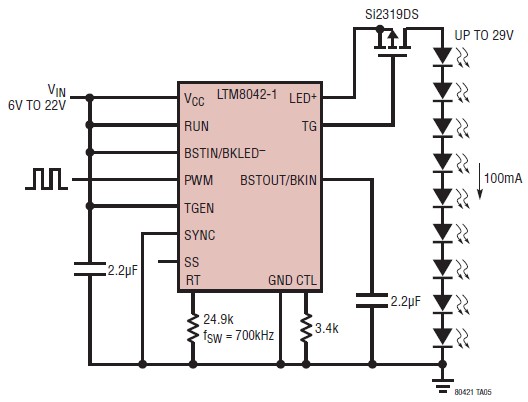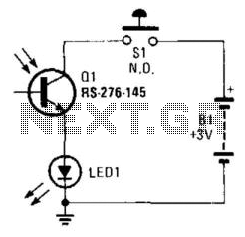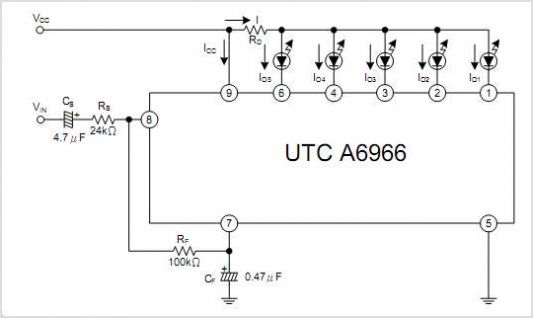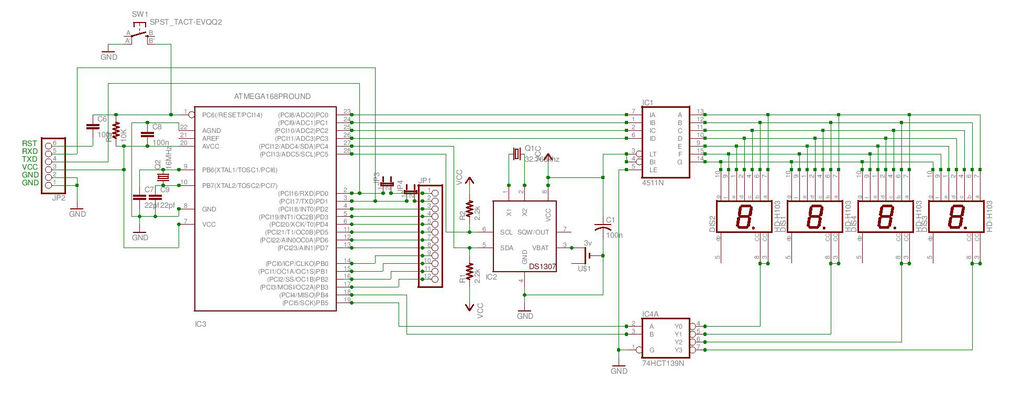
Wet soil tester with LED
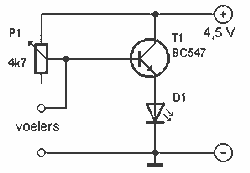
This is a very simple circuit that can be used to test whether a pot is dry or not. When the two probes are inserted in wet soil, then the resistance between the sensors are low. The base of T1 will therefore be more negative and the LED is not lit. However, when the soil is dry, its resistance will be high and will base more positive. Then the LED Ured with the two probes at a damp cloth held. P1 is then adjusted so that the LED just goes out.
P1 = 4.7 kOhm
D1 = LED
T1 = 547 BC
The circuit described operates as a moisture sensor that utilizes a simple transistor switch configuration to indicate the moisture level in soil or similar substrates. The two probes act as the sensing elements that detect the moisture content by measuring the resistance of the material between them.
When the probes are inserted into wet soil, the moisture provides a conductive path, resulting in low resistance. This low resistance condition causes the base of the NPN transistor (T1, 547 BC) to be at a lower potential, which keeps the transistor in the cutoff region. Consequently, the LED (D1) does not light up, indicating that the soil is sufficiently moist.
Conversely, when the soil dries out, the resistance between the probes increases significantly. This higher resistance leads to a more positive voltage at the base of the transistor, turning it on and allowing current to flow from the collector to the emitter. As a result, the LED lights up, providing a visual indication that the soil is dry.
The potentiometer (P1, 4.7 kOhm) is used to calibrate the sensitivity of the circuit. By adjusting P1, the threshold at which the LED turns on or off can be fine-tuned based on the specific moisture levels desired. This adjustment is crucial for ensuring accurate readings, particularly in varying soil types or conditions.
The circuit's simplicity makes it an effective solution for gardeners and horticulturists looking to monitor soil moisture without the need for complex electronic components. The use of a standard transistor and LED allows for easy assembly and minimal power consumption, making it suitable for battery-operated applications.This is a very simple circuit that can be used to test whether a pot is dry or not. When the two probes are inserted in wet soil, then the resistance between the sensors are low. The base of T1 will therefore be more negative and the LED is not lit. However, when the soil is dry, its resistance will be high and will base more positive. Then the LED Ured with the two probes at a damp cloth held. P1 is then adjusted so that the LED just goes out. P1 = 4.7 kOhm D1 = LED T1 = 547 BC 🔗 External reference
P1 = 4.7 kOhm
D1 = LED
T1 = 547 BC
The circuit described operates as a moisture sensor that utilizes a simple transistor switch configuration to indicate the moisture level in soil or similar substrates. The two probes act as the sensing elements that detect the moisture content by measuring the resistance of the material between them.
When the probes are inserted into wet soil, the moisture provides a conductive path, resulting in low resistance. This low resistance condition causes the base of the NPN transistor (T1, 547 BC) to be at a lower potential, which keeps the transistor in the cutoff region. Consequently, the LED (D1) does not light up, indicating that the soil is sufficiently moist.
Conversely, when the soil dries out, the resistance between the probes increases significantly. This higher resistance leads to a more positive voltage at the base of the transistor, turning it on and allowing current to flow from the collector to the emitter. As a result, the LED lights up, providing a visual indication that the soil is dry.
The potentiometer (P1, 4.7 kOhm) is used to calibrate the sensitivity of the circuit. By adjusting P1, the threshold at which the LED turns on or off can be fine-tuned based on the specific moisture levels desired. This adjustment is crucial for ensuring accurate readings, particularly in varying soil types or conditions.
The circuit's simplicity makes it an effective solution for gardeners and horticulturists looking to monitor soil moisture without the need for complex electronic components. The use of a standard transistor and LED allows for easy assembly and minimal power consumption, making it suitable for battery-operated applications.This is a very simple circuit that can be used to test whether a pot is dry or not. When the two probes are inserted in wet soil, then the resistance between the sensors are low. The base of T1 will therefore be more negative and the LED is not lit. However, when the soil is dry, its resistance will be high and will base more positive. Then the LED Ured with the two probes at a damp cloth held. P1 is then adjusted so that the LED just goes out. P1 = 4.7 kOhm D1 = LED T1 = 547 BC 🔗 External reference
